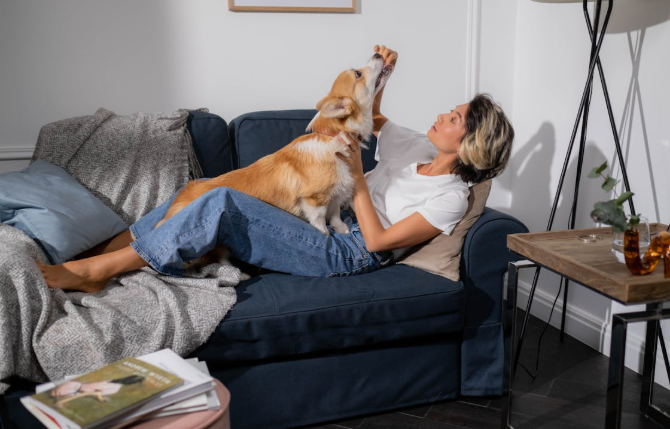Interior Painting Guide: Tips & Techniques for a Flawless Finish
- Matej Svoboda
- Apr 1
- 4 min read
Painting the interior of your home is one of the most effective and affordable ways to refresh your space and give it a new look. However, achieving a professional-quality finish requires the right preparation, tools, and techniques. Whether you’re a DIY enthusiast or a first-time painter, this guide will help you avoid common mistakes and ensure a smooth, long-lasting finish.
If you want that perfect and flawless finished look, remember these important tips:
Preparation is key – clean, repair, and prime walls before painting.
Use quality tools – high-quality brushes and rollers make a big difference.
Apply multiple thin coats – for a smooth, even finish.
Follow proper techniques – cutting in, rolling evenly, and removing tape at the right time.
Tips for perfect interior painting
Clear and protect the area
Before you start painting, it’s important to clear the space and protect your belongings to prevent unwanted messes. Move furniture out of the room if possible. If not, cover it with plastic sheets or canvas drop cloths. Use canvas drop cloths instead of plastic ones to cover floors. Canvas is more durable, reusable, and does not become slippery like plastic.
Remove outlet covers, switch plates, and light fixtures to avoid getting paint on them. Use painter’s tape to mask off areas that you don’t want to paint, such as trim, baseboards, and windows.

Repair and smooth the walls
A smooth surface is essential for a flawless paint job. Inspect the walls for any holes, cracks, or imperfections. Use spackling paste or joint compound to fill in nail holes and cracks, then smooth it with a putty knife. Once the filler is dry, sand the area with fine-grit sandpaper to create a smooth finish.
Wipe down the walls with a damp cloth to remove any dust or grease buildup.
Use painter’s tape for clean edges
Painter’s tape helps achieve clean, crisp lines and prevents paint from seeping into unwanted areas. Apply the tape carefully along baseboards, door frames, windows, and trim. Press down the tape firmly to ensure a tight seal.
Choose the right paint and finish
The type of paint you choose can significantly impact the final look and durability of your walls. Here are the different types of paint finishes and their best uses:
Flat/Matte Finish – Best for low-traffic areas and ceilings; hides imperfections but is harder to clean.
Eggshell/Satin Finish – Slightly glossy, easy to clean, and great for living rooms, bedrooms, and hallways.
Semi-Gloss/Gloss Finish – Reflective, durable, and moisture-resistant, making it ideal for colours in kitchens, bathrooms, and trims.
Expert painting techniques for a flawless finish
Cut in before rolling
“Cutting in” means painting the edges and corners of a wall before using a roller.
Use a 2-inch angled brush to paint along edges, trim, and corners where a roller won’t reach. Paint in long, smooth strokes to avoid visible brush marks. Work on one wall at a time, then use the roller before the edges dry to ensure seamless blending.
Use the "W" or "M" rolling technique
To ensure even paint distribution, use the W or M technique when rolling paint onto the walls.
Load your roller with paint and roll in a "W" or "M" pattern. Fill in the gaps with light, even strokes. Always roll from top to bottom to prevent streaks and drips.
Avoid pressing too hard with the roller; let the paint glide smoothly for an even finish.
Apply thin, even coats
One thick coat of paint might seem like a time-saver, but it often results in uneven application and longer drying times. Apply two thin coats instead of one thick coat for better coverage.
Allow the first coat to fully dry before applying the second coat (typically 2–4 hours). Lightly sand between coats for an ultra-smooth finish.
Use fans and open windows for proper ventilation and faster drying.
Remove painter’s tape carefully
To ensure crisp, clean lines, remove the painter’s tape while the paint is still slightly wet.
Remove the painter’s tape by peeling it off at a 45-degree angle to avoid peeling fresh paint. If the paint has dried, score along the edge of the tape with a utility knife before removing it.

Common interior painting mistakes to avoid
Even experienced painters can make mistakes. Avoid these common mistakes when painting rooms to ensure a flawless finish:
Skipping surface prep – Leads to uneven paint and peeling over time.
Overloading the roller or brush – Causes drips and uneven application.
Not allowing paint to dry between coats – Can result in streaks and a rough texture.
Leaving painter’s tape on too long – May cause peeling when removed.
Painting in poor lighting – Makes it easy to miss spots or apply uneven coats.
Final thoughts
Painting your home’s interior can be a cost-effective and rewarding project, but it requires careful preparation and proper techniques to achieve professional results. To get the best results out of your paint project and to transform your much loved room into a beautifully painted space, consider getting expert’s help from Adam.
At painteradam.ie, the professional team has years of hands-on experience dealing with any and every kind of painting project - big or small alike. In addition to getting guaranteed positive results, you can also rest assured knowing that they charge the most reasonable prices that are pocket-friendly for all their customers. You can check your project’s estimated price for yourself with their online calculator.
So, what are you waiting for? Check out Adam’s services today at painteradam.ie.



